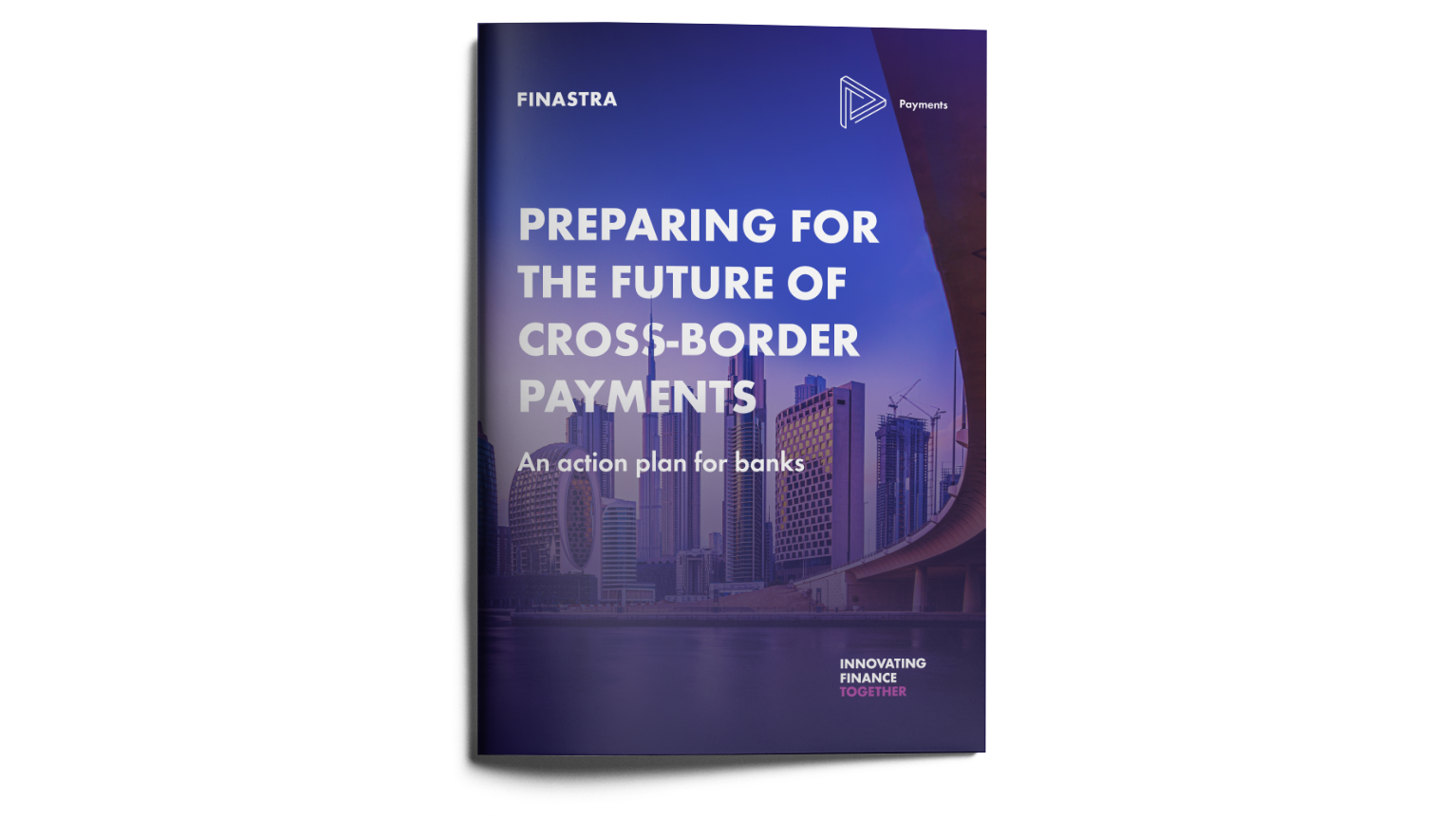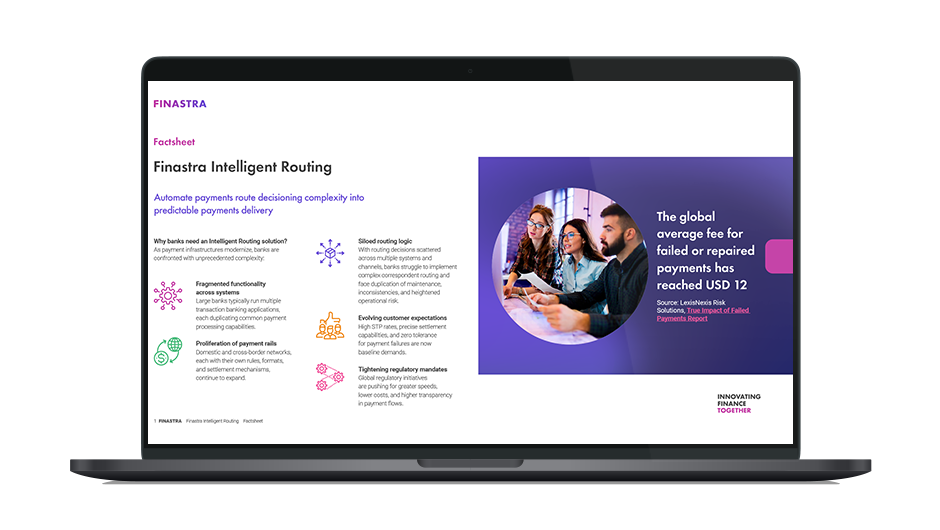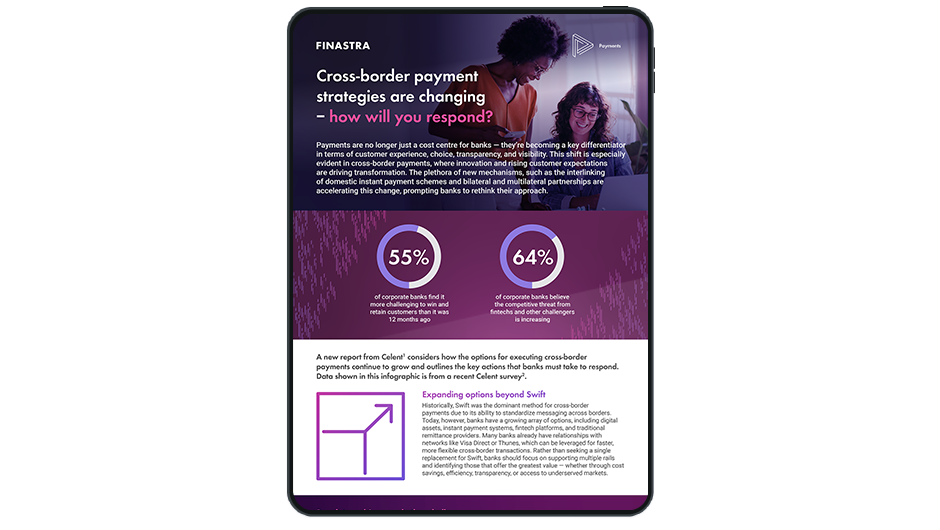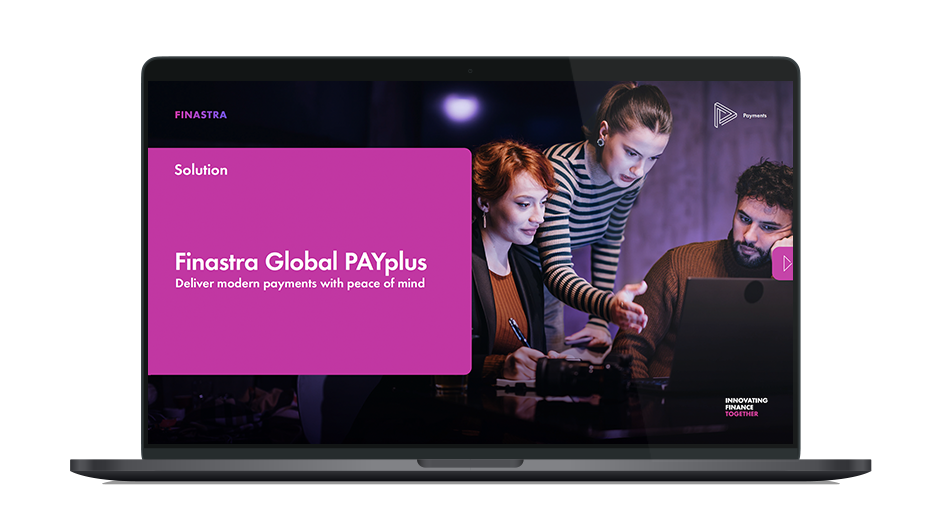Top cross-border payment questions answered
The volume of cross-border payments in Asia Pacific is steadily increasing. To capture a larger share of international payments market in this region, financial institutions (FIs) are investing in modern payments technologies that enable instant and cost-effective transactions, leading to stronger financial inclusion and enhanced customer experiences. For more insight into cross-border payments, we consulted Arun Kini, Managing Director, Payments APAC, at Finastra, to answer some of the most pertinent questions on this topic.
Find out moreThe Asia Pacific payments industry is undergoing a digital revolution. With the globalization of businesses and economies, the rise in e-commerce and remittances, and advancements in payment technologies, customers now expect cross-border payments to be instant, 24x7, cost-effective, and traceable. By 2027, APAC is projected to become the largest market for real-time payments, with an estimated 563 billion transactions.1
To capitalize on these growth opportunities, various bilateral and multilateral programs are being implemented to connect national instant payment systems from various countries into a unified network, enabling real-time cross-border payments. Government institutions, regulatory bodies, FIs, and technology providers are collectively responsible for establishing an interoperable and resilient payments infrastructure to make real-time cross-border payments more inclusive and accessible to businesses of all sizes.
Additionally, alternative instant payment rails and innovative payment methods, including digital wallets and QR-code-based payments, will continue to gain market share due to their efficiency, ease of use, and accessibility, significantly reducing cash transactions in APAC.
With foreign investments flowing into the APAC market and customers willing to explore different providers to get the best cross-border payment experiences at competitive costs, FIs must leverage advanced digital technologies and resilient payments infrastructures. This will enable them to offer real-time cross-border payments at a fraction of the cost of traditional correspondent methods.
One-third of banks in APAC have identified payment modernization as a top 3 priority for 2024.2 Modern payment solutions help reduce the operational complexity and high processing time associated with international payments, enabling near real-time settlements. This is crucial to enable FIs to capture the low-value international payments market, where the focus is more on the timely delivery of funds and minimizing the impact of FX rate fluctuations.
By adopting open and scalable payment solutions, traditional FIs can reduce technical debt, reassess operating models, and accelerate time-to-market for new products, including launching real-time payment rails and value-added services, leading to new revenue opportunities and elevated customer experiences. Additionally, modern payment solutions offer faster compliance routes due to their flexibility, standardization, security, interoperability, and ISO 20022-native capabilities.
ISO 20022 has emerged as a universal language for FIs to communicate worldwide. The messaging standard provides common data fields that foster interoperability, efficiency, and richer data exchange, enabling end-to-end processing for all payment types, including cross-border transactions.
For FIs, harmonized and structured messages flowing in and out of their banking systems enable high straight-through-processing (STP) rates and augmented risk management in areas such as fraud, anti-money laundering (AML), compliance, and sanctions screening for international payments. By adopting ISO 20022, FIs can automate back-office payment processing operations and overcome the challenges associated with manually translating proprietary message formats.
This minimizes the risks of data truncation and broken payments, contributing to a frictionless global payments experience. Additionally, the enriched customer data around payments helps FIs improve analytics and decision-making, providing deeper insights for rapid growth and innovation.
Given the pace at which modern finance is evolving, especially with the shift to real-time settlements, payment hubs enable FIs to establish a unified view of all payment types, regardless of clearing schemes, regulatory standards, back-office systems, or regions.
Modern payment hub solutions automate payment processing, reduce duplication efforts, and offer high resiliency, availability, security, visibility, and scalability to support the growing volume of digital payments. This leads to increased operational efficiency, reduced costs, improved risk management, faster time-to-market, and enhanced customer experiences. Designed with microservices and APIs, these solutions allow for continuous updates and ensure compliance with regional and global regulations while providing the infrastructure to support future innovations.
Additionally, modern payment hubs are often deployed on public cloud platforms, leveraging cloud technologies to offer pre-processing services like smart routing, FX conversion, and validation and enrichment. The agility of these modern payment hub solutions helps FIs implement new real-time payment schemes, rapidly onboard fintech service partners, and make payments more accessible.
Collaborating with a globally trusted technology partner offers numerous benefits to FIs. It reduces the time and effort required to develop in-house solutions from scratch and lowers the total cost of ownership. Through these partnerships, FIs can leverage modern technology infrastructure and standardized payment solutions to accelerate time-to-market for new cross-border payment services.
Smaller FIs, often constrained by resources and limited experience in real-time cross-border payments, can benefit significantly. A globally experienced technology partner can guide these institutions through the complexities of international payments, enhancing agility, operational efficiency, and business value, and bringing innovation and monetization opportunities, while offering usage-based “Pay as you Succeed” pricing models.
For FIs, collaborating with a reliable technology provider ensures their cross-border payment operations are compliant with evolving regulatory updates and market initiatives, while a modern cloud-native architecture improves resiliency, scalability, and simplifies maintenance and upgrades. Additionally, partners can help FIs expand cross-border payment services to new regions and penetrate challenging markets in line with their growth objectives. Finally, partners can introduce value-added payment services, to ensure the FI maintains a competitive edge.
Yes. Simply offering basic payment services is no longer sufficient for end-users. It is essential for FIs to continuously enhance their value proposition and deliver experiences that go beyond basic payment execution. FusionFabric.cloud is pre-integrated with our payment hub solutions through APIs, providing FIs with the tools and technologies needed to simplify and de-risk the onboarding of new services.
Together with our specialist fintech partners, we offer value-added payment services such as confirmation of payee, anti-money laundering, fraud prevention, and real-time sanction screening. These services are crucial for safeguarding real-time cross-border payment transactions and helping FIs safely unlock new revenue streams.
We empower FIs to co-innovate and co-create without compromising security or compliance. In addition, we offer a pre-processing services suite including currency conversion, warehousing, advising, and validation and enrichment.
At Finastra, our goal is to democratize cross-border payments and create an inclusive payments experience. We provide modern payment services to underserved communities and small-medium businesses (SMBs), building financial security and stability for all.
Our vision is to continuously equip FIs with innovative payment solutions and services that address current challenges but prepare them for the future evolution of payments. As technology reshapes financial services, we aim to lead in the delivery of a global and interoperable financial ecosystem where cross-border payments are instant, secure, transparent, affordable, and user-centric.
With over 30 years of leadership in the payments industry, we leverage modern cloud technologies, agile practices, and the power of gen AI to level the playing field and help FIs of all sizes react quickly to regulations, customer demands, and competition, fostering an ecosystem of innovative, efficient and sustainable payment services.

Arun Kini
Managing Director, Payments APAC, Finastra
Arun Kini is the APAC Managing Director of Finastra’s Payments business, where he leads the development and execution of the firm’s broad suite of integrated payment solutions to help banks modernize and future-proof their payments infrastructure. Arun brings with him over 25 years of experience in the Financial Services and Software Industry, with strong domain expertise in transaction banking, payments, and revenue management.
Here's How We Are Leading the Way
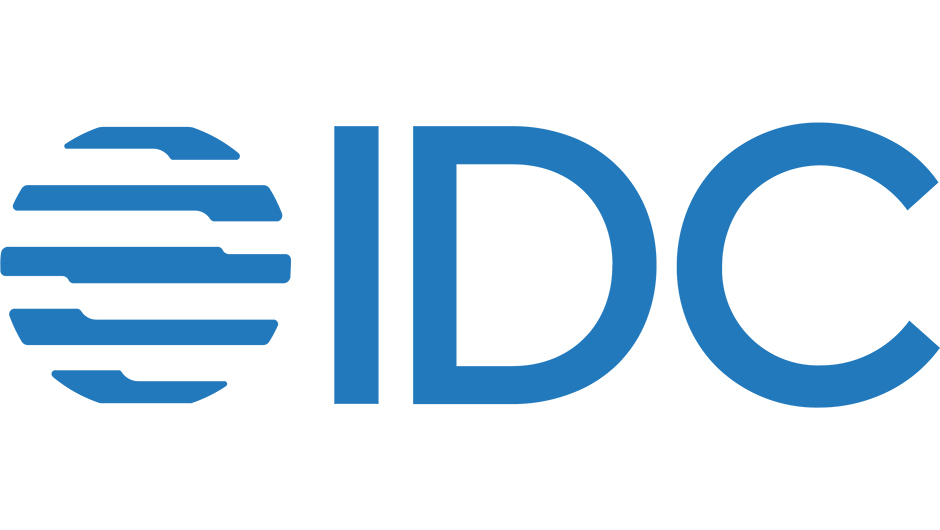
IDC MarketScape: Worldwide Integrated Bank Payment Systems 2024 Vendor Assessment
Finastra positioned as a Leader
View report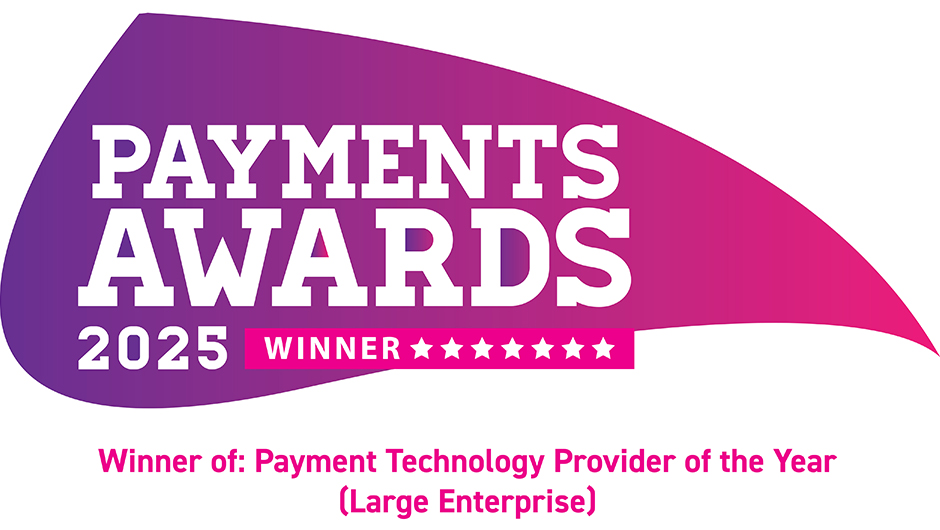
Payment Technology Provider of the Year (Large Enterprise)
Winner of Payments Awards 2025
View awardsWhy financial institutions must prioritize cross-border payments
Financial institutions relying on legacy payment solutions are finding it increasingly challenging to compete with fintechs, comply with evolving regulations, and deliver a modernized cross-border payments experience. Download our infographic to understand how we’re enabling financial institutions to address these challenges and transition to a multi-rail and unified payments processing solution, fostering continuous innovation and service excellence.
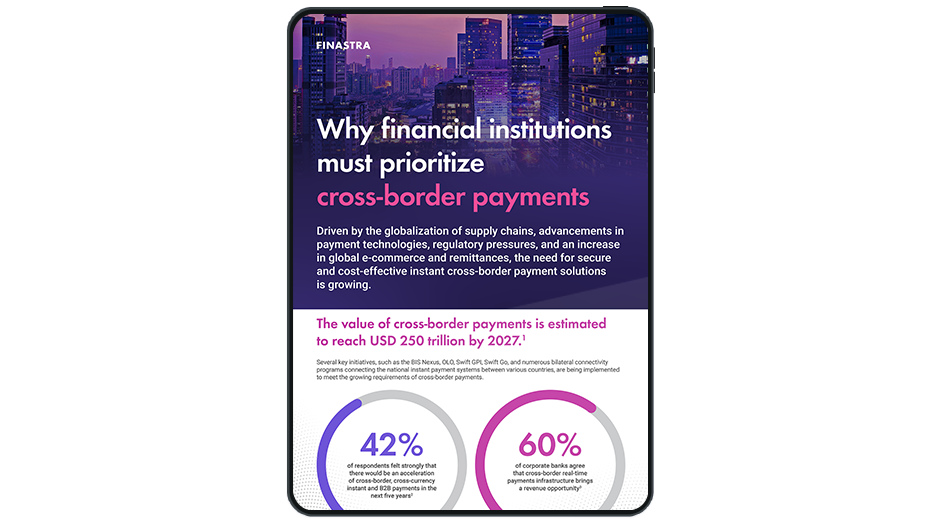
Embracing the future of cross-border payments
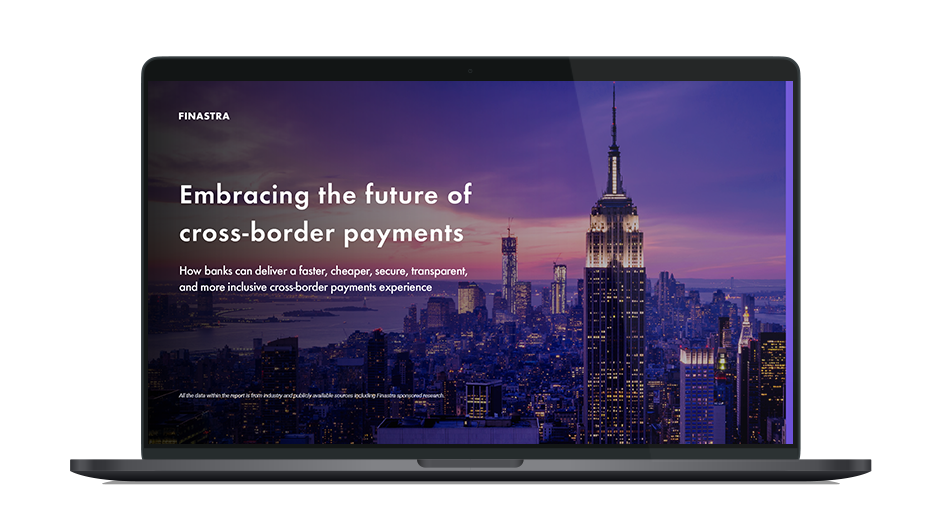
Co-authored by Arun Kini, MD APAC Payments, this report explores ongoing regional and global initiatives aimed at harmonizing cross-border payments, the challenges associated with traditional cross-border payment solutions, and the growing impact of fraud and failed payments on financial institutions, businesses, and customers. Discover how financial institutions can future-proof their payments business and compete effectively with fintechs by selecting a modern payments solution and forming collaborative partnerships to deliver value-added payment services.
We’re excited to announce that we’ll be at Money20/20 Asia this year!
Join us as we showcase how we’re shaping the future of payments and empowering financial institutions to stay ahead in a rapidly evolving landscape.
Book a meeting with usRelated resources

Press Release

